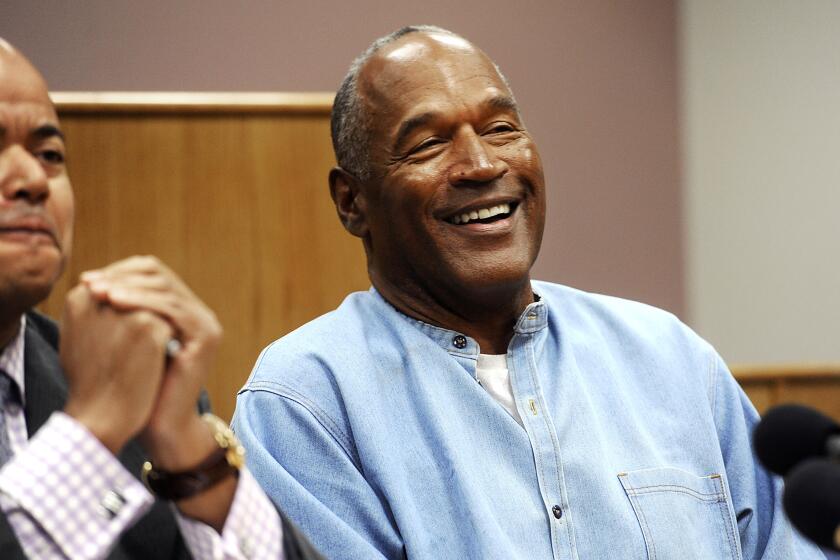Downtown Los Angeles skyline keeps evolving
Downtown Los Angeles’ skyline is poised to change dramatically in the next few years with the addition of several buildings, including the New Wilshire Grand hotel and office project.
With a spire that will make the edifice L.A.’s tallest — at 1,100 feet — the Wilshire Grand will be slightly taller than the U.S. Bank Tower, currently the tallest building west of the Mississippi.
A cluster of high-rise buildings also is planned for the South Park area around Staples Center.
For decades, L.A.’s skyscrapers have had a decidedly boxy style because of requirements that they have emergency helicopter landing pads on top. That code was changed last year, and some architecture buffs hope to see more creative designs in the future.
The Times long has taken the measure of the Los Angeles skyline, as seen from the observation deck of City Hall. Here’s how it has evolved:
1951
This photo shows the famously flat L.A. skyline of yesteryear. A strict height limit — 13 stories or 150 feet — was imposed in the early 1900s to give the city “harmonious lines.” But critics said it saddled downtown with an uninspired skyline. Only City Hall, at 27 stories, broke through the height limit thanks to an exemption for public buildings.
The tall building in the background with the distinctive tower is the Richfield Oil Co. Building. For years it was the dominant downtown structure, with its neon-lighted mast (meant to look like an oil well) glowing at night for all to see. Considered a landmark of Art Deco architecture, the building was demolished in the 1970s and replaced by the Arco twin towers. The massive, ornate Richfield elevator doors remain on display outside the towers.
At the upper right is Bunker Hill, then a slightly run-down but beloved residential area. It soon would be bulldozed to extend L.A.’s skyline.
1979
This shows the beginnings of the new downtown. After voters killed the building height limit, taller structures started appearing. Among the first were the Union Bank Tower off the 110 Freeway and the Crocker-Citizens National Bank building on Grand Avenue. The Arco twin towers followed.
For many years, the tallest building in L.A. was the 62-story United California Bank tower on Wilshire Boulevard (it was known as the First Interstate Bank building when a deadly fire erupted there in 1988, and now is called the Aon Center). But the most talked-about building in downtown during this era was the Bonaventure Hotel, with its five cylindrical towers and space-age outdoor elevators.
By then, Bunker Hill was flattened and ready for more high-rise development.
2014
These days, newer towers obscure much of the 1979 skyline from the vantage point of City Hall. Bunker Hill is close to being built out, with attractions that include Walt Disney Concert Hall. Beyond the cluster of skyscrapers that dominate the view is the new development in the Staples Center area, including the L.A. Live complex and various residential towers. Gone in the lower right is the old state building; nearby, construction is underway on a new federal courthouse.
Some other notable additions are, to the left along Spring Street are the Los Angeles Police Department headquarters and the sprawling Ronald Reagan State Building complex.
------------
FOR THE RECORD
Jan. 2, 10:03 a.m.: An earlier version of this article referred to the Ronald Reagan Federal Building. It is the Ronald Reagan State Building.
------------
Two of L.A.’s original skyscrapers — the AT&T building on the south side and the Union Bank tower — were “re-skinned” to give them a more modern look.
Twitter: @shelbygrad
More to Read
Start your day right
Sign up for Essential California for news, features and recommendations from the L.A. Times and beyond in your inbox six days a week.
You may occasionally receive promotional content from the Los Angeles Times.







